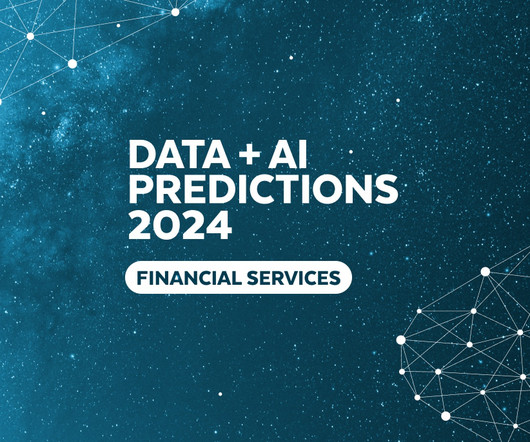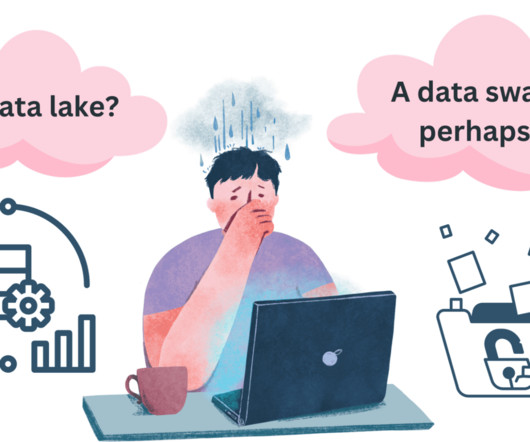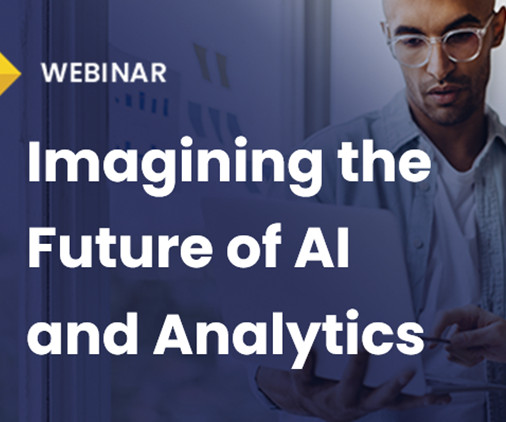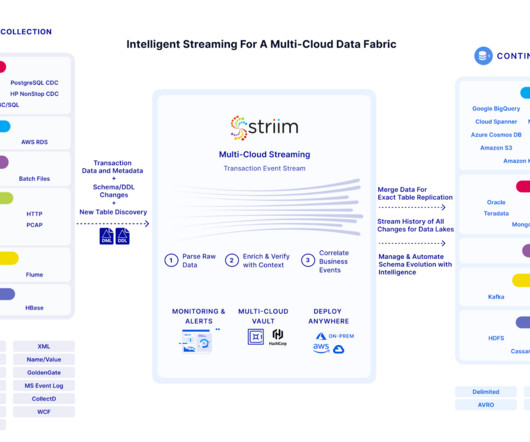Books, Courses, and Live Events to Learn Generative AI with O’Reilly
KDnuggets
FEBRUARY 5, 2024
If you are new to generative AI or an expert who wants to learn more, O’Reilly offers a range of resources to kickstart your generative AI journey.

KDnuggets
FEBRUARY 5, 2024
If you are new to generative AI or an expert who wants to learn more, O’Reilly offers a range of resources to kickstart your generative AI journey.

Snowflake
FEBRUARY 5, 2024
Generative AI tops every list of major financial services trends for 2024. And it’s no wonder — this new technology has the potential to revolutionize the industry by augmenting the value of employee work, driving organizational efficiencies, providing personalized customer experiences, and uncovering new insights from vast amounts of data. Its predictive capabilities can help leaders anticipate market trends and make more informed decisions, improving financial outcomes for customers as well as
This site is protected by reCAPTCHA and the Google Privacy Policy and Terms of Service apply.

KDnuggets
FEBRUARY 5, 2024
How and why the data lake architecture often fails to meet its promises. And how better governance helps mitigate such challenges.

Tweag
FEBRUARY 5, 2024
No, not this RAG. Despite their many capabilities, Large Language Models (LLMs) have a serious limitation: they’re stuck in time and their knowledge is limited to the data they have been trained on. Updating the knowledge of an LLM can take two forms: fine-tuning, which we will address in a future post, and the ever-present RAG. RAG, short for Retrieval Augmented Generation, has garnered a lot of attention in the GenAI community and for good reasons.

Advertisement
Generative AI is upending the way product developers & end-users alike are interacting with data. Despite the potential of AI, many are left with questions about the future of product development: How will AI impact my business and contribute to its success? What can product managers and developers expect in the future with the widespread adoption of AI?

KDnuggets
FEBRUARY 5, 2024
This article outlines strategies for overcoming data maturity challenges and accelerating AI adoption.

Towards Data Science
FEBRUARY 5, 2024
Navigating Slowly Changing Dimensions (SCD) and Data Restatement: A Comprehensive Guide Strategies for efficiently managing dimension changes and data restatement in enterprise data warehousing Imagine this, you are a data engineer working for a large retail company that utilizes the incremental load technique in data warehousing. This technique involves selectively updating or loading only the new or modified data since the last update.
Data Engineering Digest brings together the best content for data engineering professionals from the widest variety of industry thought leaders.

Precisely
FEBRUARY 5, 2024
The manufacturing processes you manage in SAP ERP systems require vast amounts of interdependent data. Material master data is one of the crucial pieces that areas throughout an organization rely on for successful operations. However, manual material data management often comes with many errors and great risks for your business. The good news? Automation can be a game-changer – solving your biggest challenges and unlocking new opportunities.

Rock the JVM
FEBRUARY 5, 2024
By Riccardo Cardin In this article, we delve into the concept of type classes in Kotlin, a powerful tool that allows developers to abstract logic for different data types. We’ll take data validation as an example to show how type classes can be used to write generic and reusable code. Our implementation will be based on the Arrow Kt library, which will exploit Kotlin’s context receivers.

Striim
FEBRUARY 5, 2024
Organizations are grappling with the increasing complexity and diversity of their data sources. Traditional approaches often fall short in addressing the challenges posed by disparate data silos, and there arises a need for a more cohesive and integrated solution. Enter Data Fabric — a paradigm that promises a unified, scalable, and agile approach to managing the intricacies of modern data.
Let's personalize your content